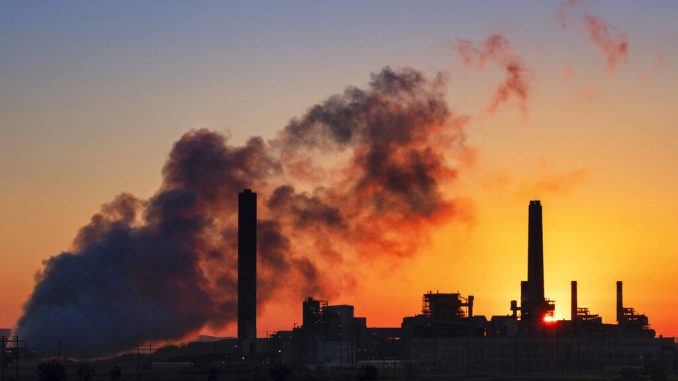
BILLINGS, Mont. — The Trump administration on Monday finalized its weakening of an Obama-era rule aimed at reducing polluted wastewater from coal-burning power plants that has contaminated streams, lakes and underground aquifers
The change will allow utilities to use cheaper technologies and take longer to comply with pollution reduction guidelines that are less stringent than what the agency originally adopted in 2015.
It’s the latest in a string of regulatory rollbacks for coal power under Trump — actions that have failed to turn around the industry’s decline amid competition from cheap natural gas and renewable energy.
The latest rule change covers requirements for cleaning coal ash and toxic heavy metals such as mercury, arsenic and selenium from plant wastewater before it is dumped into waterways.
Utilities are expected to save $140 million annually under the changes, which Environmental Protection Agency Administrator Andrew Wheeler said in a statement would protect industry jobs in part by using a phased-in approach to reducing pollution.
But environmentalists and a former EPA officials warned the move will harm public health and result in hundreds of thousands of pounds of pollutants annually contaminating water bodies.
The new rule largely exempts coal plants that will retire or switch to burning natural gas by 2028.
Coal plants are responsible for as much as 30% of all toxic water pollution from all industries in the U.S. In the Southeast, that number is even higher.
“This rule is going to continue to let these coal-fired power plants pour these toxics into the nation’s rivers and streams, contaminating drinking water and fisheries for 2.7 million people,” said Betsy Southerland, who was the science director in the EPA’s water office before retiring in 2017.
The estimate of people impacted is from the analysis that was done for the Obama-era rule, she said.
The revised rule is expected to affect 75 out of 914 coal power plants nationwide, compared to more than 100 plants affected by the 2015 rule. That’s in part because coal power usage has dropped dramatically over the past decade and many plants have been shuttered.
The rules also carve out an exception for a plant operated by the nation’s largest public utility, the Tennessee Valley Authority. The plant in Cumberland City, Tennessee, near the Kentucky border, accounts for up to one-sixth of the wastewater released in the country from cleaning out coal plant flues, millions of gallons per day more than any other plant.
In 2015, the EPA rejected an exception for the plant after determining the benefits to human health and the environment outweighed the costs of compliance. Under Trump, the agency reversed course and removed limits on the amount of selenium and nitrate the plant can discharge into the Cumberland River.
Tennessee Valley Authority representatives were reviewing the final rule and plan to abide by it, spokesman Scott Brooks said.
Power plants that are not exempted must comply by 2025, or by 2028 if they take some additional, voluntary pollution control measures. The 2015 rule would have required compliance between 2018 and 2023 and was projected to have yielded roughly $500 million in public health and environmental benefits by reducing pollution by 1.4 billion pounds (635,000,000 kilograms) annually.
EPA officials said the revised rule would reduce pollution by an additional 1 million pounds annually. Critics said that projection was based on companies taking the additional, voluntary steps and pointed out those might not come to fruition.
America’s Power, a trade organization that advocates on behalf of coal-fueled electricity, said the rule was good news and that the Obama-era rule could have forced the closure of coal plants needed to keep the power grid reliable.
“We support rules that protect the environment and human health, and we are optimistic the revised rule will not adversely affect the electricity grid,” the group said in an emailed statement.
An attorney for Earthjustice, Thom Cmar, said the environmental law firm plans to challenge the rule in federal court.
Two streams of wastewater coming from coal plants were addressed in the rule.
One is the water used to clean scrubbers that remove toxic chemicals such as mercury and arsenic from smokestacks before they are released into the air. The other stream is water used to wash coal ash out of the bottom of power plant furnaces.
The 2015 rule barred the discharge of ash waters. Monday’s revisions allow utilities to discharge up to 10% of the bottom ash water, with the actual amount to be decided on a case-by-case basis.
“We’re using 21st century technology to remove air emissions, but if you don’t take the pollution out of the water before returning it the waterways, you are defeating the purpose,” said Frank Holleman, senior attorney with the Southern Environmental Law Center.



